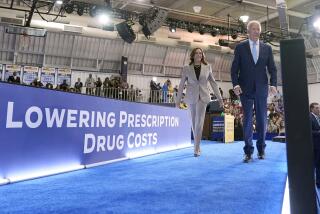Get the Best Value for Healthcare Dollars
- Share via
Your editorial on healthcare (June 3) mentions that “the General Accounting Office has estimated that the new Medicare prescription drug benefit alone will cost more than $8 trillion over the next 75 years, a number greater than the government’s current debt.” The actual outlay will be multiples of the cited $8 trillion over the next 75 years.
Even so, there’s no need to jump off a bridge. The U.S. gross domestic product this year will be about $11.5 trillion. If GDP were to grow in the future at the historical long-run average compound growth rate of 5% per year for the next 75 years -- a reasonable assumption -- then the annual GDP 75 years hence will be $370 trillion, and the sum of annual GDP for the entire 75-year period will be $7,511 trillion.
The issue is not health spending per se but whether we get the best value in return for that spending. As California’s Rand Corp. recently has shown in a series of alarming papers, the answer clearly is no. And that is the real healthcare problem no one seems to be willing to address.
Uwe Reinhardt
James Madison Professor
of Political Economy
Princeton University
*
The Times is finally singing on the right page of the healthcare hymnal, but hitting some sour notes. Yes, “fundamental and comprehensive healthcare reform” is needed, but you refer to the only real proposal for that kind of reform that has been made with the dismissive term “Hillarycare.” You head down the garden path by lauding a proposal to develop “a basic package of essential benefits” for all Americans. The concept of a basic package of benefits is a shimmering illusion that rises from a lack of understanding of how healthcare works. Even if it could be nailed down like Peter Pan’s shadow, it wouldn’t control costs.
Sid Siegel MD
Covina






